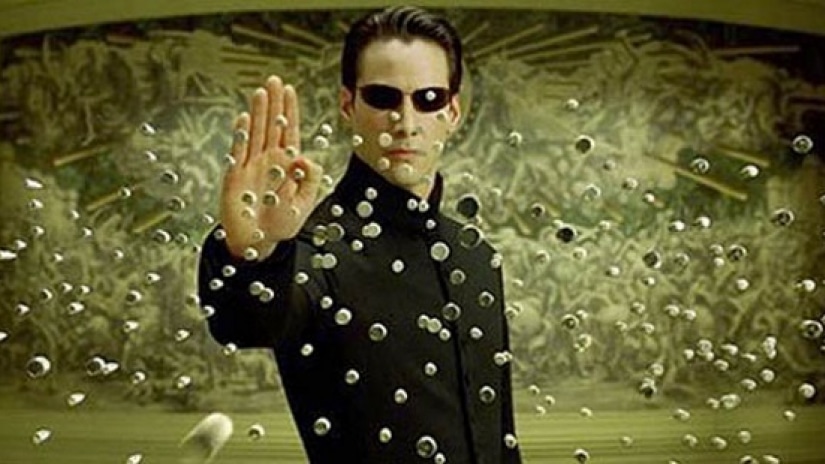For June, we celebrate Pride Month by diving into the filmography of cinema’s most prominent transgender filmmakers.
While The Spool in its current form is a pretty new publication, one of our earliest mandates was to balance out our coverage of new releases from film and television with a look back at the classics. After all, any film critic worth their salt can’t just cover whatever blockbuster or little-seen indie is coming out that week; you have to keep yourself fresh, cultivate an understanding and appreciation for the works that shaped our culture, both for good and ill.
In March, we celebrated the prolific work of the King of Quirk, Tim Burton; in April, we celebrated Black Women’s History Month with a spotlight on black women directors. For May, we celebrated the works of acclaimed Japanese animator Hayao Miyazaki.
With June being Pride Month, we at The Spool (an outlet with its fair share of queer staffers, and a queer editor who can pull rank when he wants to because it’s his site, damnit) wanted to take a look at not only important queer filmmakers, but filmmakers whose sense of imagination and sentimentality center queerness at the core of a lot of their works. Also, at a time when trans rights are under siege from the current administration, it feels even more urgent to point out the value of trans perspectives in the silly little world of motion pictures we dabble in.
And that‘s where the Wachowskis come in.
Lana and Lilly Wachowski are remarkable not just for the impact they’ve left on genre filmmaking, but by being visibly trans in a time where it’s still not the safest thing to be. Most notably, they transitioned after their careers were already established, forcing American pop culture as a whole to reckon with the idea of transition in a very public way — asking a public still unused to the idea of separating biological sex from gender identity to confront that reality and accept it as truth. Even before you get into the politics or artistry of their filmography, this fact alone makes them pioneers.

And yet, the Wachowskis made a huge impact in 1999 with the first Matrix — a revolutionary blend of kung fu, cyberpunk, anime and Eastern philosophies that set the tone for most action and sci-fi filmmaking in the years to come. Sure, the sequels landed with a thud (though we’re no stranger to their critical reappraisal), but there are moments, terms and images in that film that have irrevocably wound their way into the pop culture landscape. (Some more regrettably than others; it’s still baffling to consider that the alt-right take their metaphor for ‘waking up’ to the tyranny of feminism and SJWs from a movie directed by two trans women.)
The rest of their work has struggled to achieve the same level of success, but there’s something incredibly admirable about the Wachowskis’ growing sense of ambition, their late-career willingness to lay their hearts on their sleeves and take huge risks. Take Speed Racer‘s candy-coated psychedelia, or Cloud Atlas‘ sprawling, intercut timelines — hell, Jupiter Ascending is a big, silly swing for the fences that not nearly enough people appreciate. Their latest (and if the rumors are true, their last) project, the Netflix series Sense8, took their narrative ambition to new levels, a huge series that filmed around the globe and spanned characters from all races, genders, sexual orientations, and gender identities.

But at the center of the Wachowskis’ excess, all the frenetic imagery and ornately-designed futuristic worlds, is a big beating heart of empathy, inclusivity and sentiment that sets them apart from their more ironic peers. So much of their work advocates for the inherent interconnectivity of mankind as a species: Cloud Atlas follows the same group of people as they keep meeting each other in past and future lives, while Sense8 centers on a “cluster” of “sensates” who share their innermost thoughts and feelings. The Matrix literally plugs humanity into the same computer system, and ends its saga by forging a peace between humanity and machines. In such deeply divided times, the Wachowskis want us to know that love and unity is possible, even amongst our most bitter enemies.
In Sense8, one character says, “Love is not something we wind up, something we set or control. Love is just like art. A force that comes into our lives without any rules, expectations or limitations.” The Wachowskis handily operate within those principles — their works, flawed and messy as they often are, are made with love and without regard for limitation. They may not be perfect, but in the words of Marie Kondo, they spark joy – especially for young queer audiences who can finally see themselves represented in the openly (or subtextually) queer characters their work often contains.
Over the course of Pride Month, we’ll dive more into how these values and principles are infused throughout their work, as well as see how their major works (and some they didn’t direct, but which bear the unmistakable mark of a Wachowski joint) contribute to a filmography we’d be proud to throw on at any Pride celebration. Keep an eye on this post as we serve up a digest of our Filmmaker of the Month coverage, and share your own thoughts on the Wachowskis’ films while you’re at it.
Read our Wachowski coverage here:
“Assassins” Was the Wachowskis’ First Big Break, For Better or Worse
“Bound” Quietly Remains the Wachowskis’ Best Film
The Unconventional Heroism of “The Matrix”
Diminishing Returns Are Reloaded in the Wachowskis’ First “Matrix” Sequel
The Matrix Revolutions” Closes the Trilogy at the Edge of Hell
Remembering the Candy-Coated Spectacle of “Speed Racer”
Getting Lost in the Inscrutable “Cloud Atlas”
“Jupiter Ascending” Is the Wachowskis’ Big, Silly Cinematic Swan Song